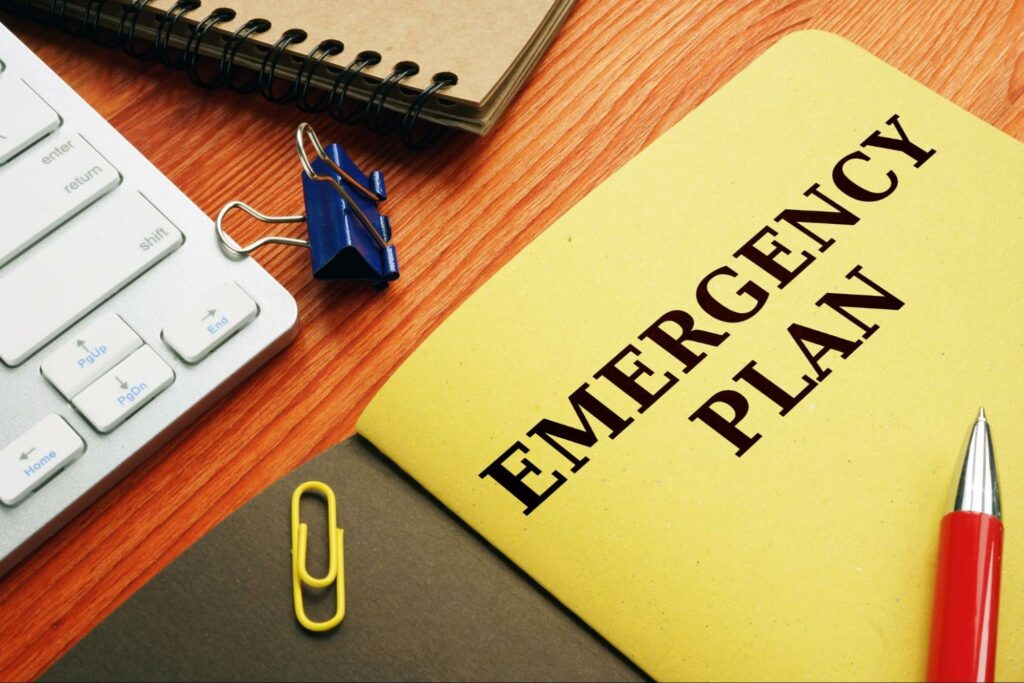Menu
close
Your business needs a plan for when things go wrong. Without a clear plan, downtime lasts longer and costs more. This blog explains what a disaster recovery plan is, when to use it, and how to build one that works.
A disaster recovery plan is a clear, documented strategy for responding to unexpected disruptions. It focuses on restoring critical systems, protecting data, and getting operations back on track as quickly as possible. While it's part of a broader emergency response plan, the disaster recovery plan zeroes in on IT and operational recovery. It’s not about preventing problems, but minimizing damage when they occur.
You activate a disaster recovery plan when normal operations are disrupted. Common triggers include:
If your business relies on digital systems (and most do), you need a solid recovery plan in place. Due to the complexities, it is extremely common for businesses to lever the support of emergency plan consultants.
Start by identifying what your business can’t operate without, as these are non-negotiable. Be sure to talk to department leads and understand what happens if a key system goes down. What can’t function if X breaks? This insight is crucial.
Separate essential from nice-to-have. Make sure your recovery plan focuses first on what will keep your business running, not on optional tools or systems that can wait.
Don’t waste time planning for every disaster that could theoretically happen. Focus on what’s most likely to affect your business.
Start by assessing the risks specific to your location, industry, and technology. For example, if your business is in a coastal area, hurricanes or flooding might be high on your list. If you rely heavily on digital systems, cyberattacks like ransomware may pose a bigger threat. Consider the common disruptions in your industry as well. For tech businesses, system failures might be a key concern, whereas retailers might focus on supply chain issues or shipping delays.
Think about the immediate risks to your operations, data, and customer relationships. Can your business handle a power outage? What happens if your website goes down for hours? Identify the scenarios that could cause the most damage, and plan accordingly. The more realistic you are, the more effective and relevant your recovery plan will be when disaster strikes.
Setting recovery goals is crucial for understanding what you’re up against. Start with RTO (Recovery Time Objective). This defines how quickly you need systems back up and running. If your website goes down, you might want it live again within hours. For internal software, maybe 24 hours is acceptable.
Next, set your RPO (Recovery Point Objective). This measures how much data loss is tolerable. If a server crashes, can you afford to lose the past hour of transactions or the last day’s worth of data? The lower the RPO, the more protection you need.
Different systems and functions will have different RTOs and RPOs. Critical operations, like processing customer orders or handling payroll, will need faster recovery times and stricter data protection. Non-critical functions, like archiving emails, might have more flexibility.
Build your recovery plan with clarity. Start by assigning clear responsibilities. Who does what, and when? Each person should know exactly what part of the plan they own.
Next, lay out checklists, contacts, login details, and access instructions. Make it easy to find critical info during a crisis. Tied to this is defining backup procedures. What data is backed up? Where is it stored? How do you restore it quickly? Include details for alternative work locations and hardware replacements as well. If the office is unusable, where will your team go? What vendors can provide immediate support?
The goal is no guesswork. Your plan needs to be detailed and actionable—so everyone knows exactly what to do when disaster strikes.
Don’t wait for a disaster to expose weaknesses in your plan. Run scheduled simulations and drills with your team. Test your communication protocols and ensure backup retrieval processes work smoothly. These exercises help identify gaps and allow you to update your plan as needed.
Finally, keep the plan updated. Systems evolve. So do threats. Review your disaster recovery plan at least twice a year. Update contacts, systems, and vendor details. An outdated plan is a liability—make sure yours is always ready to roll.

A disaster recovery plan is your business’s lifeline when the unexpected strikes. Don't leave your business vulnerable. At SP Group, we specialize in creating custom disaster recovery plans that are actionable, efficient, and ready for anything. Contact SP Group today to get started.